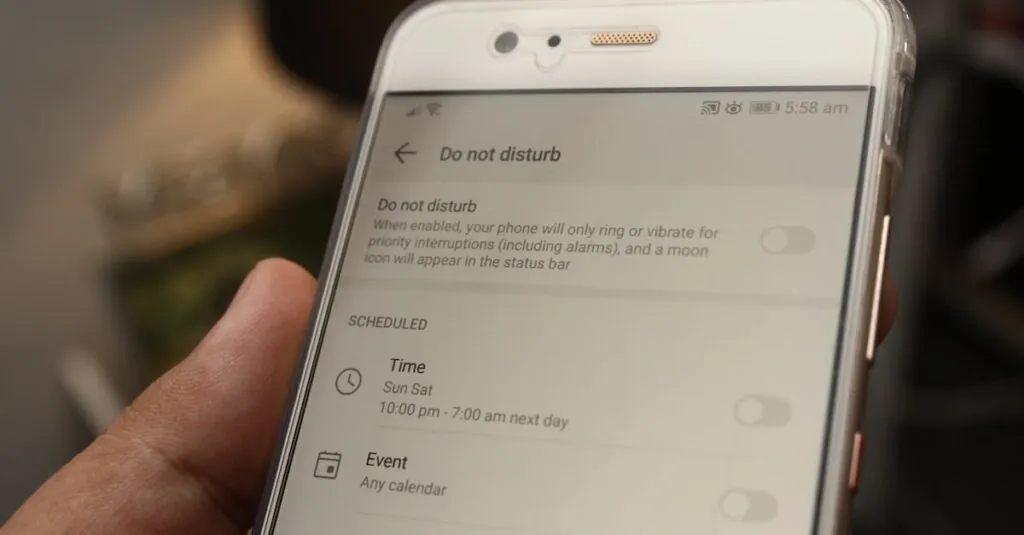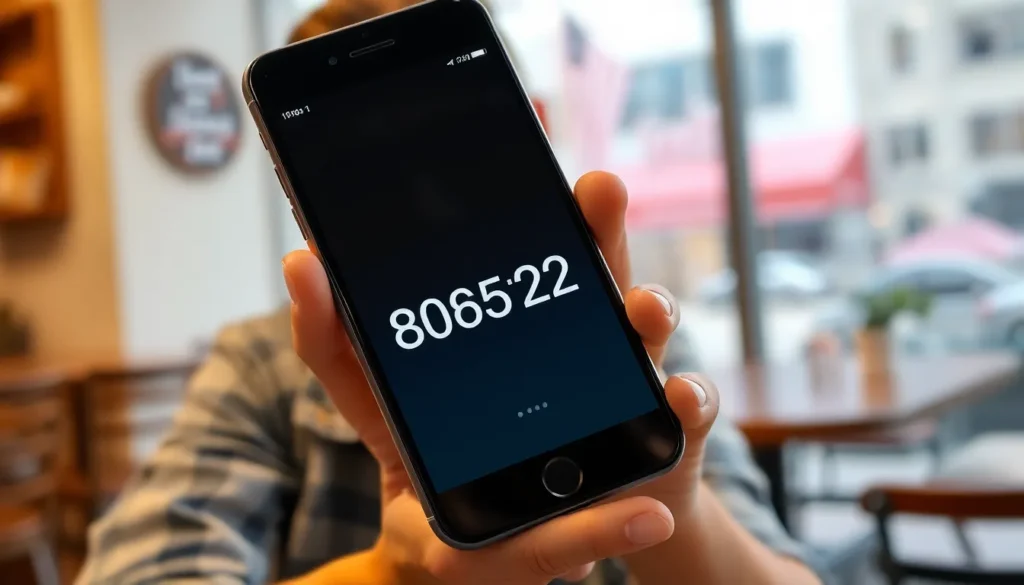Table of Contents
TogglePicture this: you’re waiting for that all-important text, maybe a dinner invite or a meme that’ll make your day, but your iPhone stays silent. Frustration sets in as you wonder if your phone’s gone rogue or if you’ve accidentally entered a text-free zone. It’s a modern-day mystery that can leave even the most tech-savvy feeling a bit lost.
Common Reasons For Missing Text Notifications
Missing text notifications on an iPhone often stems from various settings. Individuals may overlook simple configurations that can prevent alerts.
Check Notification Settings
Checking notification settings can quickly identify issues. Ensure that notifications for the Messages app are enabled. Navigate to Settings, tap on Notifications, then select Messages. Confirm that Allow Notifications is turned on, with alerts set to display on the Lock Screen, Notification Center, and as banners. Individuals might also want to verify that the sound settings are configured. Custom ringtones or vibration patterns for specific contacts may also require attention.
Verify Do Not Disturb Mode
Verifying Do Not Disturb mode helps clarify notifications’ absence. This feature mutes calls and notifications during specified times. To check, go to Settings, then tap on Focus or Do Not Disturb. Individuals should ensure this setting is turned off or review scheduled times that might interfere. Occasionally, users accidentally activate this mode, leading to missed messages. If this feature is active, individuals might not receive alerts until it’s turned off or adjusted.
Troubleshooting Steps to Resolve Issues
If an iPhone user isn’t receiving text notifications, several troubleshooting steps can help resolve the issue. These methods can restore notification functionality efficiently.
Restart Your iPhone
Restarting the iPhone often resolves many minor glitches. To perform a restart, hold down the power button until the slider appears. Swiping the slider turns off the device. Once it’s powered down, pressing the power button again starts it back up. This simple action refreshes system processes and can restore notifications.
Update iOS
Keeping iOS updated is crucial for optimal performance. Checking for updates involves going to Settings, selecting General, and tapping on Software Update. If an update is available, downloading and installing it is necessary. New updates often contain bug fixes and enhancements, which may resolve notification issues. Regularly updating the device ensures access to the latest features and improvements.
Managing App Notifications
Adjusting notification settings on an iPhone is essential for ensuring text alerts function properly.
Adjust Message App Settings
Users can personalize settings within the Messages app to enhance notification performance. Start by opening Settings and selecting Messages. Inside this menu, verify that the alerts are active. Ensure that’s set to show on the Lock Screen, Notification Center, and as banners. Furthermore, consider enabling sounds to distinguish message notifications. Users may also review the “Repeat Alerts” option to receive multiple notifications for unread messages. This feature ensures important texts don’t go unnoticed, effectively reducing the chance of missing crucial information.
Allow Notifications From Contacts
Enabling notifications for specific contacts can help prioritize important messages. Users can customize alerts by tapping on the contact’s name within the Messages app. By accessing the “Info” option, users find settings to turn on “Hide Alerts” as well as to customize tones for each contact. Allowing notifications from key individuals ensures timely updates and avoids unnecessary silence during crucial exchanges. It’s a useful technique for enhancing communication flow, particularly in scenarios where immediate responses matter.
Additional Tips and Tricks
Configuration issues can still occur despite following previous advice. Implementing further adjustments may enhance notification functionality on an iPhone.
Reset All Settings
Resetting all settings can clear misconfigurations that lead to notification issues. This process doesn’t delete personal data but restores system settings to their defaults. Access the Settings app, tap on General, then select Transfer or Reset iPhone, and choose Reset All Settings. Confirm the action, and the device may restart. Afterward, verify notification settings again to see if text alerts resume. Remember to customize preferences like Wi-Fi passwords and wallpaper afterward, since they will revert to default.
Ensure Sufficient Storage
Insufficient storage space can hinder notification performance on an iPhone. Users should regularly check available storage by navigating to Settings, tapping General, then selecting iPhone Storage. Clearing unnecessary apps, photos, or files can free up space and improve device functionality. If storage is low, consider removing unused apps or transferring photos to cloud services. Maintaining adequate storage allows the iPhone to work efficiently, which may enhance the receipt of text notifications.
Missing text notifications on an iPhone can be a frustrating experience. By checking notification settings and ensuring that alerts are enabled users can often resolve these issues quickly. It’s crucial to review Do Not Disturb settings and ensure the device is updated to the latest iOS version.
Personalizing notification preferences for the Messages app can also make a significant difference. By following the outlined troubleshooting steps users can regain control over their notifications and stay connected. Ultimately a few adjustments can lead to a smoother communication experience on their iPhones.




